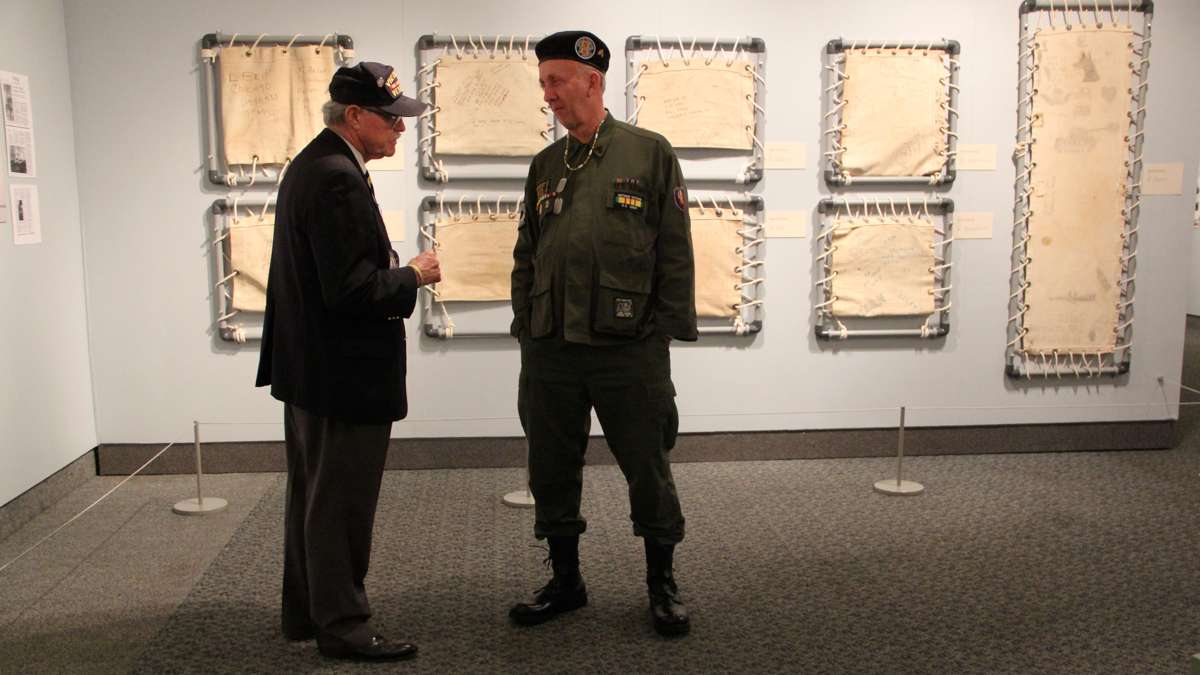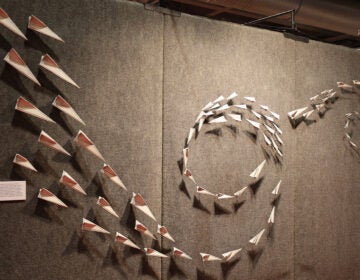Scraps of graffiti left by troops on voyage to Vietnam now at Seaport Museum
“This bunk is the death bed,” wrote a soldier while on a troop ship heading to Vietnam in 1967, scrawling the letters on the underside of a canvas bunk bed.
“He who sleeps here will die in Vietnam.”
As many as 5,000 troops could be crammed onto the USNS General Nelson Walker for two weeks, crossing the Pacific Ocean to a foreign land few of them knew very much about. Nobody knew what the war would have in store for them once they arrived.
“Everybody goes through something different,” said George Stankovich, who sailed on the Walker when he was 19 years old for a tour lasting a year and a half. “Some guys were thinking about what’s there. Some guys make light of it so they don’t have to think about it. Some guys want to get it over with.”
Many of those feelings of fear, frustration, machismo, and nostalgia were expressed as graffiti on the underside of the canvas bunks. The bunks were stacked about 18 inches apart, so that the noses of soldiers lying on them were a scant few inches away from the underside of the bunk above. With nothing to do but think, many took to the pen.
Soldiers who had some artistic talent (and some who didn’t) created cartoons of busty women in bikinis, or nasty caricatures of Vietnamese enemies they might later see down the barrel of a rifle. There is at least one political doodle: “RFK won’t support LBJ policy in Vietnam,” someone wrote, with a crude portrait of then-presidential hopeful Robert Kennedy.
Those who couldn’t draw wrote messages to loved ones back home with flashes of hometown pride.
Technically, soldiers were not allowed to deface the canvas bunks, just as they were not allowed to drink beer or play cards on the ship. The exhibition “Marking Time: Voyage to Vietnam,” now on view at the Independence Seaport Museum at Penn’s Landing, suggests they did all of these things with impunity.
The traveling exhibition was created by the Vietnam Graffiti Project, an organization that arose from the discovery of thousands of these canvas bunks in 1997, just as the Walker was about to be scrapped. Volunteer veterans pulled the canvases out and tried to identify and locate as many of graffiti writers as possible.
The show, in the Seaport Museum’s community exhibition gallery, hopes to tap the public for clues to find missing graffiti writers, including “Little Ty,” a young man who likely was a gang member with the North Philadelphia Tenderloins.
“I wonder where everybody is,” pondered Stankovich, 67, dressed in decades-old fatigues while visiting the exhibition. “Are they still with us, or did they pass away?”
Stankovich went to Vietnam as an enlisted soldier, to protect the Ho Chi Minh trail, and later acted as a supply sergeant for a helicopter unit. He was not in direct combat during his 19 months in country. He came away without injuries, even requesting an additional three months in country in a deal to reduce his three-year enlistment.
He ended up being one of the fortunate passengers on the Walker. During his two-week journey, he had no idea what would befall him during the war. He didn’t even know where the ship was going to land.
“You’re happy, you’re killing time, because it counts as time in country,” said Stankovich. “But you’re anxious to get started, so you can get it over with. You have mixed emotions.”
WHYY is your source for fact-based, in-depth journalism and information. As a nonprofit organization, we rely on financial support from readers like you. Please give today.









